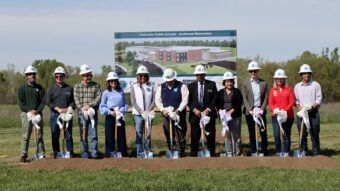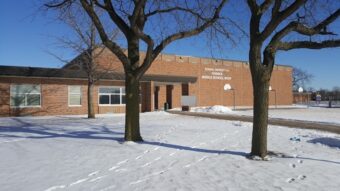 By Brian Forde, Partner, O’Keefe Lyons & Hynes
By Brian Forde, Partner, O’Keefe Lyons & Hynes
Since the start of the recovery from the 2008 recession, we have witnessed incredible growth in Chicago’s industrial market.
Since 2013 alone, some of the market measurements that demonstrate that growth, according to Colliers, include:
- 8 million square feet of space has been absorbed, including a record amount of 26.6 million square feet in 2016
- the vacancy rate has fallen from 9.0 percent in early 2013 to 6.7 percent at the end of 2016 (note: the vacancy rate peaked at 12.3 percent in early 2010)
- 3 million square feet of new space has been developed throughout the metro area—activity reached a peak last year when 22.3 million square feet of new space came on line
There are other measurements that demonstrate the strength of the market. Since 2013 more than 210 million square feet of acquisitions greater than $1 million—including owner/occupied facilities—occurred. The average sale price, on a per square foot basis in 2016, was $58, an increase of 32 percent since 2013.
With all these metrics pointing to dynamic and sustained growth, the values assigned to industrial property—throughout the metropolitan area—have followed suit. The flipside to this dramatic growth: real estate property taxes typically follow with similarly substantial increases that mirror lease revenue increases and growth to the bottom line for landlords.
Projecting impact
Property taxes always play an important role in the real estate decision making process. The level of significance depends on a variety of factors, sometimes including the profile and nature of the entity that owns the property. For example, a real estate investment trust (REIT) making decisions through the lens of international tax considerations may be less impacted by local property taxes because they benefit from tax advantages overseas. Further, REITs are essentially able to spread operating costs over a broad portfolio of properties without impacting overall share value.
In contrast, a small to mid-size business that owns the building in which it also operates, or a small local landlord, will be more directly and significantly impacted by increasing property values and the correlating increase in property taxes. All other things being equal, the impact of property tax increases on an owner will be more critical if taxes on similar facilities are lower in neighboring counties. An additional scenario might be the availability of local incentives or abatements, such as 6B status in Cook County, which enable taxpayers to reduce the taxes if they occupy a vacant building or build a new facility.
Take action to review your valuation and appeal if warranted
It can be overwhelming to consider just how many taxable commercial properties there are in any given county, let alone the entire State of Illinois. Cook County for example has over one million eight hundred thousand taxable parcels. Even just industrial properties alone is a staggering number of real property for any agency to manage and track.
That volume is in part one of the reasons for the Cook County triennial reassessment program whereby the Assessor revalues property once every three years. There are simply too many properties in Cook County to reassess more frequently. And with that volume handled by a relatively small office, oversights and misunderstandings are bound to occur.
Additionally, because of the sheer number of taxable properties, the property tax system was established to be flexible, giving assessors wide latitude to do their work within a framework of acceptable assessing and appraising techniques and principles, while allowing taxpayers an opportunity to refine the valuation process through the appeal system.
It is through the appeal and review process, allowing taxpayers to present objective evidence of specific valuation arguments, that the assessors’ offices become more objective, basing evaluations and adjustments on market comparisons and other objective factors provided by taxpayers that simply cannot be factored in when values are initially established.
For example, in Cook County, the general guideline is that if property taxes for a commercial property exceed 25 percent or more of gross income, something may be amiss, and action should be taken. In some cases, this ratio should be much lower. A professional can examine the income, determine how fairly the property is being assessed relative to its competition, and recommend whether the assessment and taxes are fair, or should be challenged.
Disparate values Are common: Explore appropriate incentives
In addition to what could be significant ranges in core valuations, determining the correct value of industrial properties in Cook County is sometimes challenging because there can be great disparity among the assessment and taxes of otherwise extremely similar buildings.
For example, due to various government incentives in place on industrial real estate in Cook County. Specifically, industrial real estate property taxes are typically assessed at 25 percent of valuation, many properties have received tax incentives to attract and/or retain users. Incentives such as the Class 6b industrial incentive are granted to some taxpayers as a means to help owners of buildings remain, or become, more competitive.
For example, for buildings that previously were vacant for a year or more and not producing rent, or owners who otherwise would not build a new building, the owner or prospective buyer of a building can ask a local municipality to reduce the assessment ratio to 10 percent of the market value. This has the positive impact of lowering the property taxes by two and a half times for at least a ten-year period.
While incentives programs have largely been successful, in many industrial areas, it also has created an imbalance of tax burdens among very similar neighboring property owners. For example, it could be possible on a block containing 10 almost identical properties that half of them are taxed at 25 percent of market value while the remaining half are taxed at 10 percent due to the incentive. Without the incentive, it will be difficult for the owners at normal rates to compete in future leasing or sale situations.
With the reality that the value of industrial properties is continuing to increase, and no downturns are likely in the near term, investors and users alike need to explore all avenues to exercise their rights to appeal the assessed value of their property and to apply for or retain incentives that are in place or available to them.
Industrial real estate owners must realize that while property taxes always represent a significant operational expense, one that can take control of the situation and positively impact the returns on an investment and/or have a measurable impact on the operating expenses by containing the property tax expense. And although the ways in which property value is assessed can often seem mysterious and subjective, due to the mass appraisal process used by most assessing officials, objectivity in valuation is essential, and can be achieved when the valuation is properly evaluated and if necessary, appealed, by a tax professional.
Brian Forde is a partner at O’Keefe Lyons & Hynes, a Chicago-based law firm.



